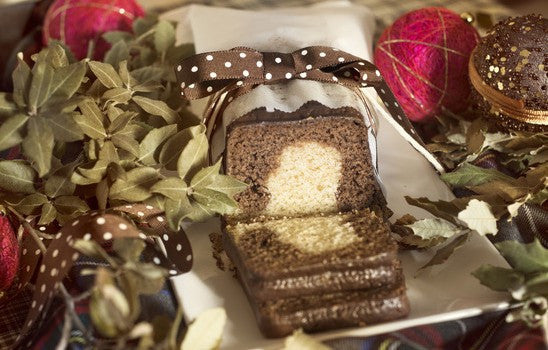
Article Detail
19 Dec
Christmas; all trees, tinsel and Turkey, right? Well maybe south of the border where the Victorians managed to hijack the UK’s traditional take on Christmas, but in Scotland tradition means tradition. Scottish Christmas traditions are certainly older than many practised south of the border. In fact, in Scotland, Christmas has been less of a focus than New Year and there’s some very historical reasons for the surprisingly large number of New Year related traditions. During the reformation the strongly Presbyterian Kirk cancelled Christmas completely. Although the same happened in England during Cromwell’s republic rule, Christmas celebrations were re-instated with the monarchy. The kirk’s continued dominance in Scotland, however, meant that Christmas was only re-instated as a public holiday in 1958. In the meantime, inventive as ever, Scotland continued to come up with plenty of other reasons to celebrate. Here are some you may have heard of and others that are certainly worth experiencing if you haven’t.
The Loony Dook
OK, so this one is only 25 years old but it’s in aid of a good cause. If the 1st of January leaves you searching for a way to clear your head, this may well work. There’s a parade (noisy, but it’ll wake you up) which is followed by a refreshing dip in the Firth of Forth. Yes, you read that right. Definitely one for those brave-hearts amongst us, this charity fund raiser also incorporates fancy dress (preferably really, really warm fancy dress) and lots and lots of money raised for charity. New Year is just as much about giving as Christmas it seems.

Orcadian Oddities
Christmas traditions in Scotland are, as everywhere, about getting together with friends and family, having fun and keeping warm. In Kirkwall in Orkney they took all of this on board centuries ago and came up with the Kirkwall Ba’. With its origins lost to history, the event consists of something that might be loosely described as a football match. Very, very loosely. The ball is made from cork stuffed leather and there’s not strictly speaking a pitch, unless you count the whole of Kirkwall. There’s nothing so complicated for the rules about the Ba’ and no such thing as penalties. The game lasts indefinitely and is played on both Christmas Day and New Year’s Day.
Great Barrels of Fire
In Burghead, in Moray, the Burning of the Clavie takes place on 11th of January. This was formerly New Year’s day prior to the switch from the Julian to the Gregorian calender. In some parts of the British Isles this led to calls for the return of the “missing” eleven days (they got lost in the switch) but sensibly the people of Burghead just decided to celebrate New Year twice instead. The Clavie burning remained on the traditional day, if not quite the date. The origins of the ceremony are lost but the sight of the burning tar-filled barrel (the Clavie) being paraded around town and finally left to roll in smouldering chunks down a nearby hill may leave you with the distinct impression that its origins have more to do with pagan fire festivals than anything to closely related to Christmas! Pieces of the Clavie are collected up and considered to bring luck – many being posted to Scottish ex-pats around the world.
Hogmany Traditions
Hogmanay comes with its own full set of traditions. One of the most recent is the massive and spectacular firework celebrations held in Edinburgh. Forget Trafalgar Square and head north to Princes Street if you want to bring the New Year in in style. While many cities around the globe now celebrate New Year with fireworks, big clocks and fancy bridges, the Home of Hogmanay remains firmly located in Scotland’s capital. Concerts, ceilidhs, street parties and of course, those fireworks are literally littered across the city.
First Footing
First-footing is another Hogmanay tradition common in Scotland and thanks to globe trotting ex-pats, plenty of other parts of the world too. The basic principle is to celebrate the arrival of the first guest to your home on New Year’s Day. Lucky guests are considered to be male, tall, dark and handsome, while fair headed individuals are said to be less lucky. The guest is expected to bear gifts and the traditional options were fuel for the fire, food or drink. It’s generally considered acceptable to manage this ceremony and time it for just after midnight, with the luckiest looking available individual taking the role of first footer!
Fireside Tales and Men in Cloaks
The tall, dark-haired and handsome reference in the first footing ceremony may bear some links to even older traditions. Yuletide – a name used across the UK but seeming to originate in Scotland – has links to older gods than the Christian type. Yule being derived from one of the twelve names of the Norse god Odin. At the darkest time of the year the hooded Odin would join people by their fire sides, listening to their tales and leaving gifts of coins or bread in return. Similar traditions can be found across Europe (not least the big man himself) and getting together, telling tales and giving gifts at this time of year is possibly the best tradition of all.
Traditional Foods

From Dundee cake to Haggis, Scottish dishes have travelled around the world and while shortbread is embarrassingly synonymous with Scotland to many people it might be the perfect traditional nibble at the Scottish Christmas table. The modern version has some ancient routes and was traditionally known as a bannock in Scotland. It may be particularly significant at Christmas as it was once baked in honour of the sun – again links with the pagan light festivals. The modern habit of making marks to divide the portions seems to be rooted in a much older tradition depicting the sun’s rays. It may be humble, but its credentials linking it to ancient Scottish traditions make it the perfect addition to any traditional Scottish Christmas.
 Free delivery on orders over £20
Free delivery on orders over £20






